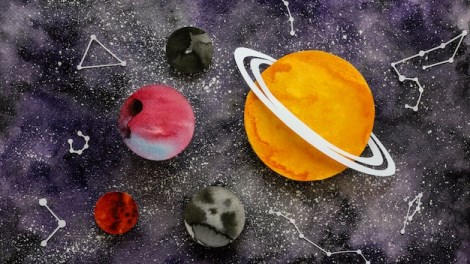Interesting Facts About Jupiter

Jupiter is the largest planet in our solar system.
It would take more than 1,300 Earths to fill up Jupiter’s volume.
Jupiter has a total of 79 known moons.
The Great Red Spot on Jupiter is a storm that has been raging for over 300 years.
The auroras on Jupiter are larger and more powerful than Earth’s Northern and Southern Lights.
Jupiter has the fastest rotation period of any planet, completing a full rotation in just under 10 hours.
Jupiter’s gravitational pull is so strong that it can slingshot asteroids and comets away from Earth.
Despite its size, Jupiter is not solid and is made up mostly of gas and liquid.
The clouds on Jupiter are made up of ammonia and methane, giving it its unique coloration.
Jupiter’s core is believed to be hotter than the surface of the Sun.
Jupiter experiences intense lightning storms, with bolts up to 1,000 times more powerful than those on Earth.
The Voyager 1 and 2 spacecrafts visited Jupiter in 1979 and provided us with valuable insights about the planet.
Jupiter’s magnetic field is 14 times stronger than Earth’s.
Jupiter’s mass is more than 300 times that of Earth.
If Jupiter had been 80 times more massive, it would have become a star instead of a planet.
Jupiter’s moon, Ganymede, is the largest moon in the solar system and even bigger than the planet Mercury.
Jupiter’s moon, Io, is the most volcanic object in the solar system, with over 400 active volcanoes.
Interesting Facts About Jupiter part 2
Jupiter’s moon, Europa, is believed to have a subsurface ocean that could potentially harbor life.
The gravity on Jupiter is 24.79 times stronger than Earth’s.
The first spacecraft to fly by Jupiter was Pioneer 10 in 1973.
Jupiter’s distinct stripes are created by powerful jet streams in its atmosphere.
Jupiter is named after the king of the Roman gods.
The average temperature on Jupiter is around -150 degrees Celsius (-238 degrees Fahrenheit).
Jupiter’s atmosphere is filled with turbulent storms and high winds, reaching speeds of up to 400 miles per hour.
Jupiter’s mass is so large that it actually affects the orbits of other planets in the solar system.
The Galilean moons of Jupiter were discovered by Galileo Galilei in 16
The four largest moons of Jupiter are Io, Europa, Ganymede, and Callisto.
If you could stand on the surface of Jupiter, you would experience 2.5 times Earth’s gravity.
Jupiter has a faint ring system, although not as prominent as Saturn’s.
The temperature at Jupiter’s core is estimated to be over 20,000 degrees Celsius (36,032 degrees Fahrenheit).
Jupiter is one of the five planets visible to the naked eye from Earth.
The surface of Jupiter is covered in colorful bands of clouds, with white and brown zones alternating.
Jupiter’s magnetic field traps particles from its moons, creating intense radiation around the planet.
Due to its high speed of rotation, Jupiter is slightly flattened at the poles and bulges at the equator.
Jupiter’s five largest moons are collectively known as the Galilean moons.
The famous astronomer, Carl Sagan, once referred to Jupiter as a failed star.
Jupiter’s storms are not limited to the Great Red Spot, with smaller storms constantly forming and dissipating.
The largest impact scar on Jupiter, known as ‘Comet Shoemaker-Levy 9’, was caused by a comet collision in 1994.
Jupiter has been visited by multiple spacecraft, including Juno, which has been orbiting the planet since 20
Jupiter’s atmosphere contains traces of water vapor, but not enough for it to be considered habitable.
The intense pressure and temperature in Jupiter’s core contribute to the formation of metallic hydrogen.
Some scientists believe that Jupiter plays a crucial role in protecting Earth from asteroid impacts by gravitationally deflecting them away.
The first detailed observations of Jupiter were made by Giovanni Cassini in the 17th century.
Jupiter’s largest moon, Ganymede, has its own magnetic field.
Despite its distance from Earth, Jupiter can still be seen with the naked eye and is a popular target for amateur stargazers.

